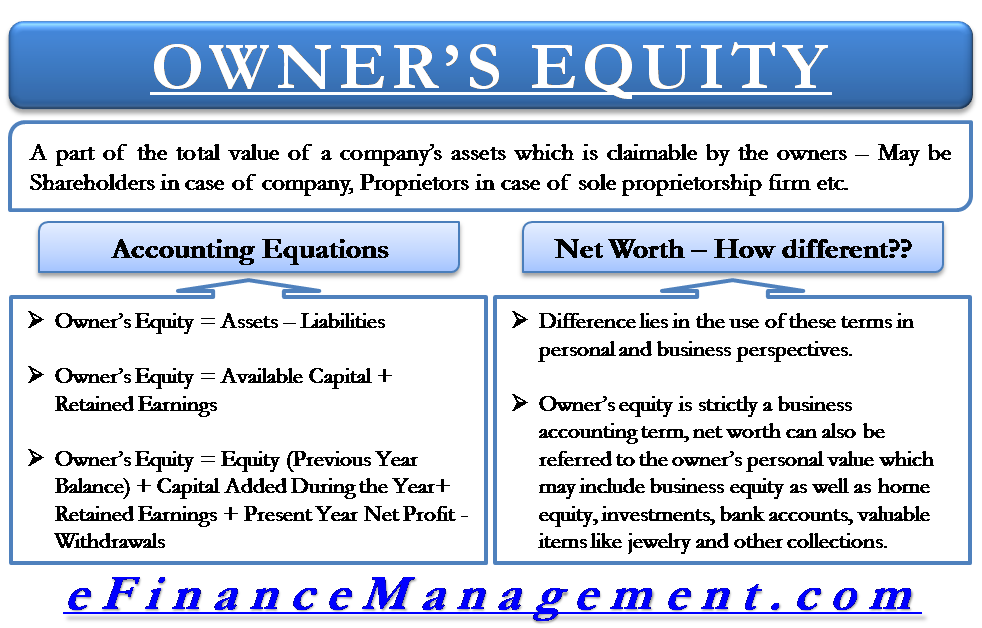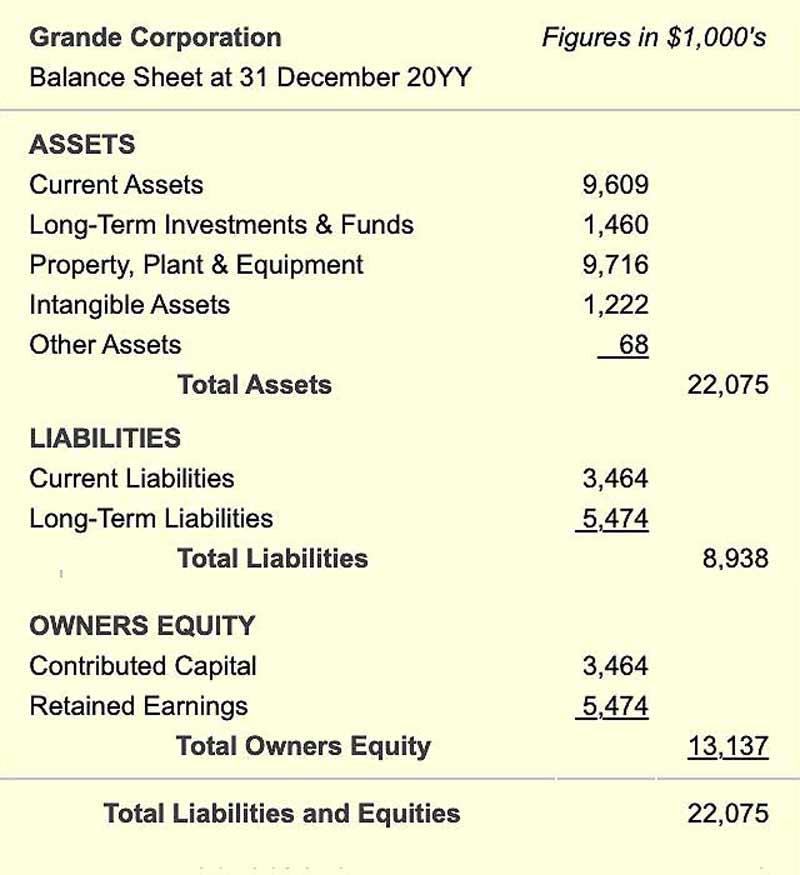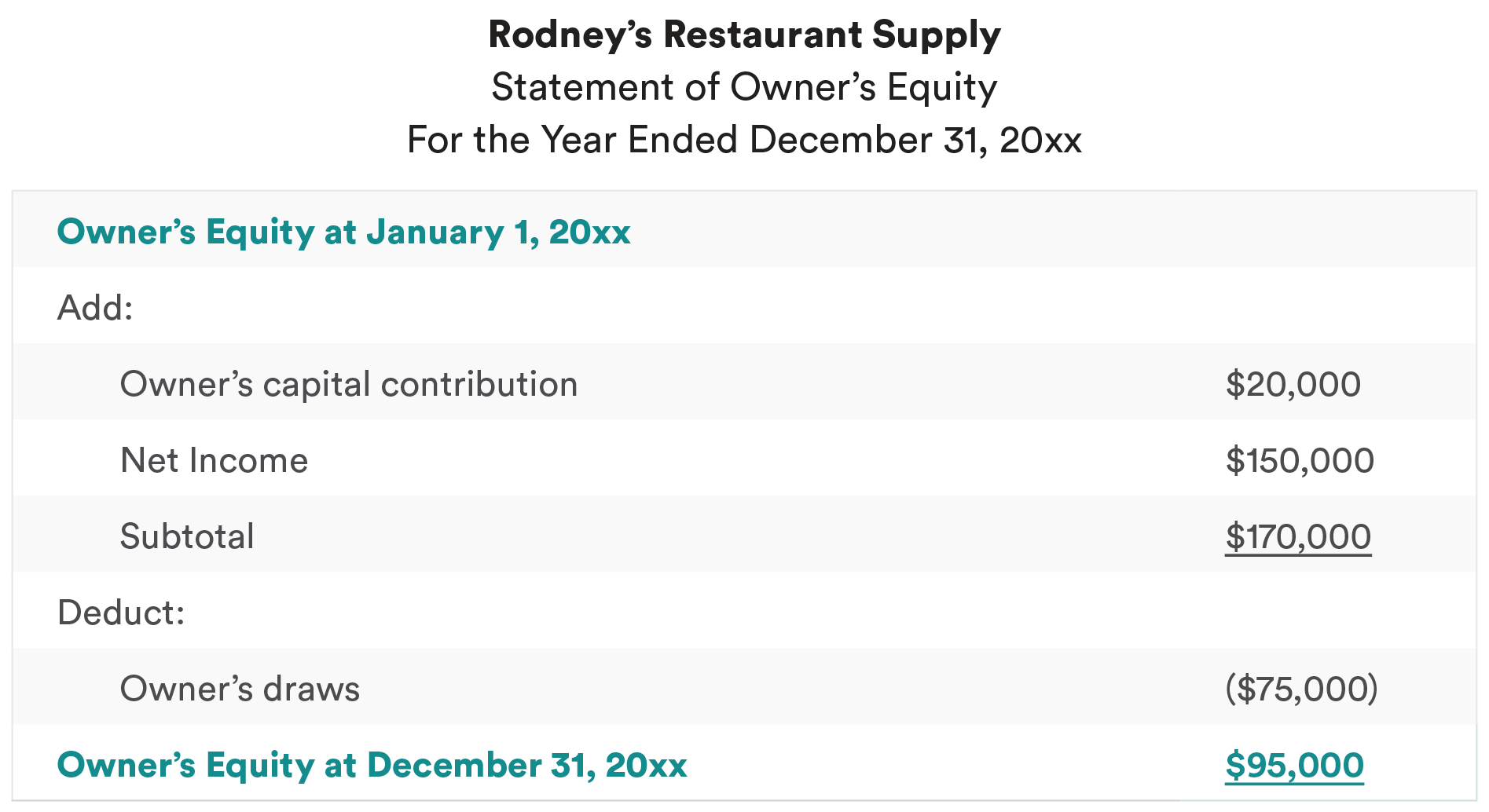In accounting a capital account is a general ledger account that is used to record the owners contributed capital and retained earnings the cumulative amount of a companys earnings since it. When you put money in the business you also use an equity account.

Owner S Equity Definition Formula Examples Calculations
Owners equity can also be referred to as net worth or net assets.

. Assets Liabilities Owners Equity. It generally consists of the cumulative net income minus any cumulative losses less dividends declared. In simple terms owners equity is defined as the amount of money invested by the owner in the business minus any money taken out by the owner of the business.
Owned capital can be in the form of equity whereas borrowed capital refers to the companys owed funds or say debt. The account for a sole proprietor is a capital account showing the net amount of equity from owner investments. Increasing Owners Equity Through Contributed Capital.
The accounting equation is Assets Liabilities Owners Equity. Furthermore capital is used in calculation when deriving the value of equity as shareholders equity is the sum total of financial capital contributed by the owners and the retained earnings in the balance sheet. Any money the owner invests and any profits he earns add to the capital account while any withdrawals he makes decrease the account.
Contributed capital or Paid-in-capital is a Balance sheet equity account showing what stockholders have invested by purchasing stock from the company. The capital account in accounting refers to the general ledger that records the transactions related to owners funds ie. As you consider Investments that we talked about above recognize that.
The accounting equation shows that the equity or capital in a firm is equal to the difference between the value of its assets and liabilities. Owners equity represents the owners investment in the business minus the owners draws or withdrawals from the business plus the net income or minus the net loss since the business began. This account also reflects the net income.
Owners Equity 400 Assets 1200 Liabilities 800. Owners equity also known as capital are the difference between the total assets and liabilities. Owner draw is an equity type account used when you take funds from the business.
The first is paid-in capital or contributed capital consisting of amounts paid in by owners. Typically the owners capital account is only used for sole proprietorships. In other words this account shows the how much of the company assets are owned by the owners instead of creditors.
They also share a relation where the three of them can make an equation such as Assets Liabilities Owners Equity or even Assets Liabilities Owners Equity. The stockholders equity section of the balance sheet for corporations contains two primary categories of accounts. The similarity between equity and capital is that they both represent interest that owners hold in a business whether it is funds shares or assets.
The second category is earned capital consisting of amounts earned by the corporation as part of business operations. Owners equity is one of the three main sections of a sole proprietorships balance sheet and one of the components of the accounting equation. In a corporation equity is shareholders equity.
That is the difference between assets and total liabilities of a companyStockholders equity experts add consists of the capital which basically refers to the assets assigned by the members to the company in which participants reserves dividends profits and in general all assets net for those entitled owners or partners of the companyIn. For a sole proprietorship or partnership equity is usually called owners equity on the balance sheet. For instance if you initially invested 5000 into.
Owner Equity parent account Owner Draws sub account of owner equity Owner Investment sub account of owner equity View solution in original post. Here are some key differences between equity and capital. When you take all of your assets and subtract all of your liabilities you get equity.
Equity is an owners or a group of owners claim on the businesss assets. Retained earnings is the primary component of a companys earned capital. On the contrary debt is the sum of money borrowed by the company from bank or external parties that required to be repaid after certain years along with interest.
Their contributions as well as earnings earned by the business till date after reduction of any distributions such as dividends. It is important to the study of accounting because it shows what the organization owns and the sources of or claims against those resources. Owners equity reflects an owners investment value in a company.
So your chart of accounts could look like this. In other words its the difference between the amount of assets and the value of liabilities that allows you to know what you own after paying off debts. Capital refers only to a companys financial assets that are available to spend.
The single capital account in the owners equity section captures all the money that would be reflected separately in a corporations retained earnings and contributed capital accounts. Equity represents the total amount of money a business owner or shareholder would receive if they liquidated all their assets and paid off the companys debt. Owners Capital also called owners equity is the equity account that shows the owners stake in the business.
Each owner of a business except corporations has a separate capital account which is shown on the balance sheet as an equity account. Remember that owners equity is a category. It is reported in the balance sheet under the equity side as shareholders equity in the case of a.
Liabilities are amounts that are owed by the firm. Owners equity refers to the owners investment in an asset after all liabilities have been deducted. Up to 24 cash back Assets are things that you own that have dollar value.
Liabilities are the debts you owe. Equity is a form of ownership in the firm and equity holders are known as the owners of the firm and its assets. Equity refers to the stock indicating the ownership interest in the company.
Exhibits 2 and 4 show clearly where. The only difference between owners equity and shareholders equity is whether the business is tightly held Owners or widely held Shareholders. The draw reduces the owners capital account and owners equity so now the equation is.
Owners equity can also be thought of as the net worth or value of the business. Equity is another word for ownership Equity is another word for ownership. For a small business owner equity is the net worth of your business.
The three forms of business utilize different accounts and transactions relative to owners equity.

Owner S Equity Definition Accounting Equations Vs Net Worth

Owners Equity Net Worth And Balance Sheet Book Value Explained

Owner S Equity What It Is And How To Calculate It Bench Accounting
0 Comments